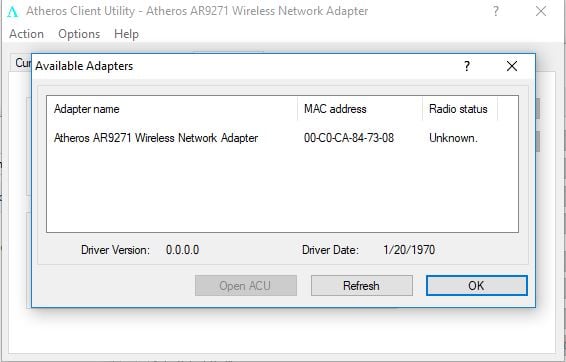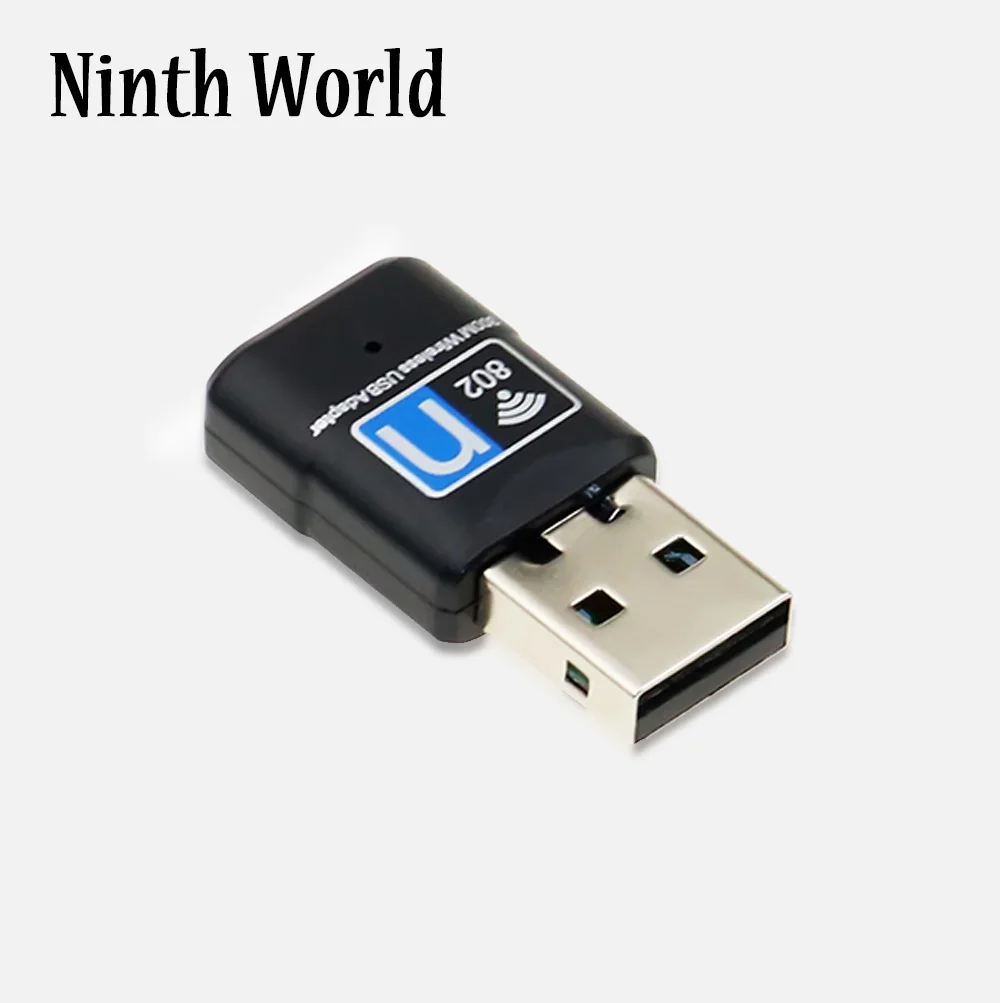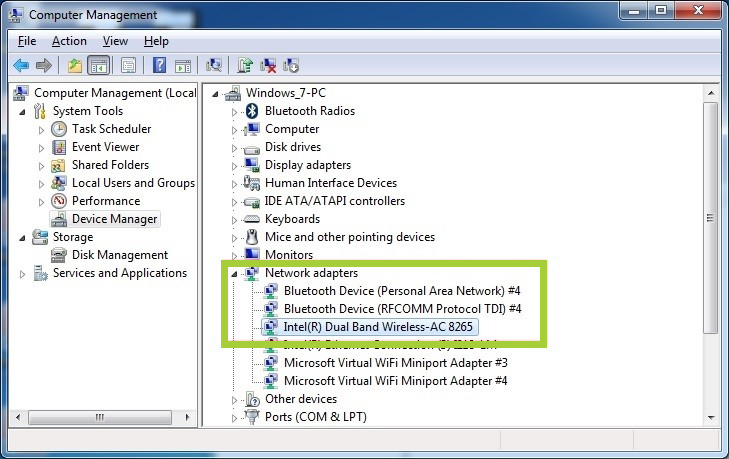Wireless LANs consist of components similar to traditional Ethernet-wired LANs. In fact, wireless LAN protocols are similar to Ethernet and comply with the same form factors. The big difference, however, is that wireless LANs don't require wires.
- Wirelesslan Network & Wireless Cards Drivers
- Wireless Network Card Driver Download
- Wireless Lan Network Diagram
User Devices
Users of wireless LANs operate a multitude of devices, such as PCs, laptops, and PDAs. The use of wireless LANs to network stationary PCs is beneficial because of limited needs for wiring. Laptops and PDAs, however, are commonly equipped with wireless LAN connectivity because of their portable nature. User devices might consist of specialized hardware as well. For example, bar code scanners and patient monitoring devices often have wireless LAN connectivity.
- RALINK/MediaTek 802.11ac WLAN Adapter Driver. Network & Wireless Cards. Drivers for Operating System(s) Windows 10 64bit. Windows 10 32bit. Windows 8.1 64bit. Windows 8.1 32bit. Windows 8 32bit. Windows 8 64bit.
- Network Products Guide 2018 IT World Awards. Ralink 802.11n Wireless LAN Card - Driver Download. Vendor:. Product: Ralink 802.11n Wireless LAN Card. Hardware Class: Net. Search For More Drivers.: Go! Windows 10 32-Bit Driver.
Wireless Lan Driver free download - Ralink 802.11n Wireless LAN Card, 802.11b+g Broadcom Wireless Lan Driver 4.102.15.61.zip, Foxconn Wireless AR5007EG Lan Driver 7.2.0.152.zip, and many more programs. A wireless local area network (WLAN) is a local area network (LAN) that doesn't rely on wired Ethernet connections. A WLAN can be either an extension to a current wired network or an alternative to it. WLANs have data transfer speeds ranging from 1 to 54Mbps, with some manufacturers offering proprietary 108Mbps solutions. Acronym for wireless local-area network.Also referred to as LAWN.A type of local-area network that uses high-frequency radio waves rather than wires to communicate between nodes.
Radio NICs
A major part of a wireless LAN includes a radio NIC that operates within the computer device and provides wireless connectivity. A wireless LAN radio NIC, sometimes referred to as a radio card, often implements the 802.11 standard. The cards generally implement one particular physical layer, such as 802.11a or 802.11b/g. As a result, the radio card must utilize a version of the standard that is compatible with the wireless LAN. Wireless LAN radio cards that implement multiple versions of the standard and provide better interoperability are becoming more common.
Radio cards come in a variety of form factors, including: ISA, PCI, PC card, mini-PCI, and CF. PCs generally utilize ISA and PCI cards; but PDAs and laptops use PC cards, mini-PCI, and CF adapters.
Access Points
An access point contains a radio card that communicates with individual user devices on the wireless LAN, as well as a wired NIC that interfaces to a distribution system, such as Ethernet. System software within the access point bridges together the wireless LAN and distribution sides of the access point. The system software differentiates access points by providing varying degrees of management, installation, and security functions. Figure 5-1 shows an example of access-point hardware.
Figure 5-1. Wireless LAN Access Points Connect Wireless LANs to Wired Networks (Photo Courtesy of Linksys)
Wirelesslan Network & Wireless Cards Drivers

In most cases, the access point provides an http interface that enables configuration changes to the access point through an end-user device that is equipped with a network interface and a web browser. Some access points also have a serial RS-232 interface for configuring the access point through a serial cable as well as a user device running terminal emulation and Telnet software, such as hyper terminal.
Configuring an Access PointLook at the basic radio configuration settings for a Cisco 350 access point. These types of settings are common for other access points as well. One parameter that you should set is the service set identifier (SSID). The SSID provides a name for the specific wireless LAN that users will associate with. For security purposes, it's a good idea to set the SSID to something other than the default value. For most applications, set the transmit power of the access point to the highest value, which is typically 100 milliwatt (mW) in the United States. This will maximize the range of the wireless LAN. The actual maximum effective power output is 1 watt, but the lower transmit power allows enough margin to allow the use of a higher-gain antenna and still remain within limitations. In the United States, set the access point to operate on any one of the channels in the range from 1 through 11. When installing only one access point, it doesn't matter which channel you choose. If you install multiple access points, or you know of a nearby wireless LAN within range of yours, you need to select different non-overlapping channels (such as channels 1, 6, and 11) for each access point within range of one another. As a minimum, activate wired equivalent privacy (WEP) encryption as a minimum level of security. You'll need to assign an encryption key that all user devices will need in order to interface with the access point with encrypted data. If you choose to implement 40-bit keys, enter 10 hexadecimal characters, with each character having the value of 1 through 9 or A through F. The 104-bit keys require 26 hexadecimal characters. Keep in mind that 40-bit keys correspond with 64-bit encryption and 104-bit keys correspond with 128-bit encryption to the addition of a 24-bit initialization vector in both cases. |
Routers
By definition, a router transfers packets between networks. The router chooses the next best link to send packets on to get closer to the destination. Routers use Internet Protocol (IP) packet headers and routing tables, as well as internal protocols, to determine the best path for each packet.
A wireless LAN router adds a built-in access point function to a multiport Ethernet router. This combines multiple Ethernet networks with wireless connections. A typical wireless LAN router includes four Ethernet ports, an 802.11 access point, and sometimes a parallel port so it can be a print server. This gives wireless users the same ability as wired users to send and receive packets over multiple networks.
Routers implement the Network Address Translation (NAT) protocol that enables multiple network devices to share a single IP address provided by an Internet service provider (ISP). Figure 5-2 illustrates this concept. Routers also implement Dynamic Host Configuration Protocol (DHCP) services for all devices. DHCP assigns private IP addresses to devices. Together, NAT and DHCP make it possible for several network devices, such as PCs, laptops, and printers to share a common Internet IP address.
Figure 5-2. NAT and DHCP Are Essential Protocols That Routers Implement
Wireless LAN routers offer strong benefits in the home and small office setting. For example, you can subscribe to a cable modem service that provides a single IP address through DHCP to the router, and the router then provides IP addresses through DHCP to clients on your local network. NAT then maps a particular client on the local network to the ISP-assigned IP address whenever that client needs to access the Internet. As a result, you need a router if you plan to have more than one networked device on a local network sharing a single ISP-assigned address. Instead of having one box for the router and another box for the access point, a wireless LAN router provides both in the same box. Routers, however, are seldom used in larger implementations, such as hospitals and company headquarters. In these cases, access points are best because the network will have existing wired components that deal with IP addresses.
Wireless Network Card Driver Download
Repeaters
Access points, which require interconnecting cabling, generally play a dominant role for providing coverage in most wireless LAN deployments. Wireless repeaters, however, are a way to extend the range of an existing wireless LAN instead of adding more access points. There are few standalone wireless LAN repeaters on the market, but some access points have a built-in repeater mode.
A repeater simply regenerates a network signal to extend the range of the existing network infrastructure. (See Figure 5-3.) A wireless LAN repeater does not physically connect by wire to any part of the network. Instead, it receives radio signals from an access point, end-user device, or another repeater; it retransmits the frames. This makes it possible for a repeater located between an access point and distant user to act as a relay for frames traveling back and forth between the user and the access point.
Figure 5-3. Wireless LAN Repeaters Are Simple Devices That Require No Cabling
As a result, wireless repeaters are an effective solution to overcome signal impairments such as RF attenuation. For example, repeaters provide connectivity to remote areas that normally would not have wireless network access. An access point in a home or small office might not quite cover the entire area where users need connectivity, such as a basement or patio. The placement of a repeater between the covered and uncovered areas, however, will provide connectivity throughout the entire space. The wireless repeater fills holes in coverage, enabling seamless roaming.
A downside of wireless repeaters, however, is that they reduce performance of a wireless LAN. A repeater must receive and retransmit each frame on the same radio channel, which effectively doubles the amount of traffic on the network. This problem compounds when using multiple repeaters, because each repeater will duplicate the data sent. Therefore, be sure to plan the use of repeaters sparingly.
Antennae
Most antennae for wireless LANs are omnidirectional and have low gain. Nearly all access points, routers, and repeaters come standard with omnidirectional antennae. Omnidirectional antennae satisfy most coverage requirements; however, consider the use of optional directive antennae to cover a long, narrow area. In some cases, the antenna is integrated within a radio card or access point and there is no choice to make. If a need exists to use a directive antenna (higher gain), ensure that the radio card or access point has an external antenna connector.
Introduction
A wireless local area network (WLAN) is a local areanetwork (LAN) that doesn't rely on wired Ethernetconnections. A WLAN can be either an extension to a current wirednetwork or an alternative to it.
WLANs have data transfer speeds ranging from 1 to 54Mbps, with somemanufacturers offering proprietary 108Mbps solutions. The 802.11nstandard can reach 300 to 600Mbps.
Because the wireless signal is broadcast so everybody nearby canshare it, several security precautions are necessary to ensure onlyauthorized users can access your WLAN.
A WLAN signal can be broadcast to cover an area ranging in sizefrom a small office to a large campus. Most commonly, a WLAN accesspoint provides access within a radius of 65 to 300 feet.
WLAN types
Private home or small business WLAN
Commonly, a home or business WLAN employs one or two access pointsto broadcast a signal around a 100- to 200-foot radius. You can findequipment for installing a home WLAN in many retail stores.
With few exceptions, hardware in this category subscribes to the802.11a, b, or g standards (also known as Wi-Fi); some homeand office WLANs now adhere to the new 802.11n standard. Also, becauseof security concerns, many home and office WLANs adhere to the Wi-FiProtected Access 2 (WPA2) standard.
Enterprise class WLAN

An enterprise class WLAN employs a large number of individualaccess points to broadcast the signal to a wide area. The accesspoints have more features than home or small office WLAN equipment,such as better security, authentication, remote management,and tools to help integrate with existing networks. These accesspoints have a larger coverage area than home or small officeequipment, and are designed to work together to cover a much largerarea. This equipment can adhere to the 802.11a, b, g, or n standard,or to security-refining standards, such as 802.1x and WPA2.
WLAN standards
Several standards for WLAN hardware exist:
| WLAN standard | Pros | Cons |
|---|---|---|
| 802.11a |
|
|
| 802.11b |
|
|
| 802.11g |
|
|
| 802.11n | The 802.11n standard was recently ratified by theInstitute of Electrical and Electronics Engineers (IEEE), as compared to theprevious three standards. Though specifications may change, it isexpected to allow data transfer rates up to 600Mbps, and may offerlarger ranges. | |
Security standards
The 802.11x standards provide some basic security, but are becomingless adequate as use of wireless networking spreads. Following aresecurity standards that extend or replace the basic standard:
WEP (Wired Equivalent Privacy)

WEP encrypts data traffic between the wireless access point and theclient computer, but doesn't actually secure either end of thetransmission. WEP's encryption level is relatively weak (only 40 to128 bits). Many analysts consider WEP security to be weakand easy to crack.
WPA (Wi-Fi Protected Access)
WPA implements higher security and addresses the flaws in WEP, butis intended to be only an intermediate measure until further 802.11isecurity measures are developed.
802.1x
This standard is part of a full WPA security standard. WPA consistsof a pair of smaller standards that address different aspects ofsecurity:
Wireless Lan Network Diagram
- TKIP (Temporal Key Integrity Protocol encryption), which encryptsthe wireless signal
- 802.1x, which handles the authentication of users to the network
Commonly, wireless systems have you log into individual wirelessaccess points or let you access the wireless network, but then keepyou from accessing network data until you provide furtherauthentication (e.g., VPN).


802.1x makes you authenticate to the wireless network itself, notan individual access point, and not to some other level, such asVPN. This boosts security, because unauthorized traffic can be deniedright at the wireless access point.
WPA2/802.11i
The Wi-Fi Alliances coinedthe term 'WPA2' for easy use by manufacturers, technicians, and endusers. However, the IEEE name of the standard itself is802.11i. The encryption level is so high that it requires dedicatedchips on the hardware to handle it.
In practical use, WPA2 devices have interoperability with WPAdevices. When not interfacing with older WPA hardware, WPA2 deviceswill run strictly by the 802.11i specifications.
WPA2 consists of a pair of smaller standards that address differentaspects of security:
- WPA2-Personal, which uses a pre-shared key (similar to a single password available to groups of users, instead of a single individual); the pre-shared key is stored on the access point and the end user's computer
- WPA2-Enterprise, which authenticates users against a centralizedauthentication service
IU Secure, the new IU wireless network for students,faculty, and staff, uses WPA2 Enterprise for authentication.
The information in this document was adapted from the Wireless LAN Association web page.
